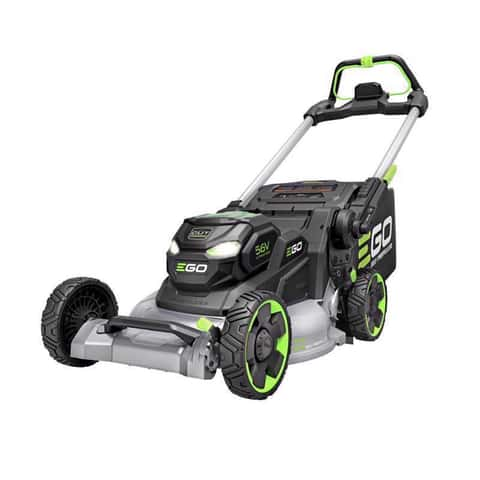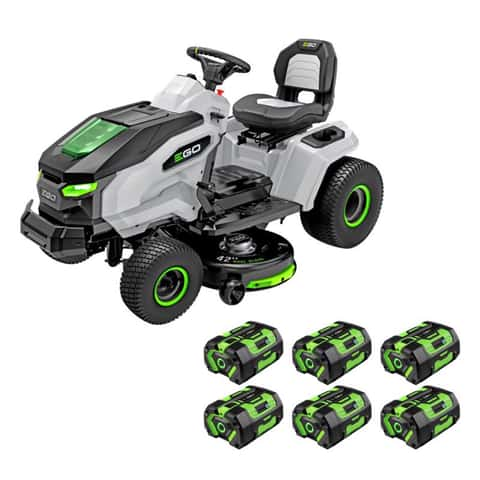Transform your lawn care routine with the high-performance lawnmowers available at M&D Supply Inc in Cypress, TX. From battery-operated models to gas-powered machines, M&D Supply Inc offers a variety of lawnmowers to cater to your specific yard needs. Whether you’re maintaining a small patch or a sprawling estate, these lawnmowers are designed to deliver precision, efficiency, and ease of use. Visit M&D Supply Inc for expert advice and find the perfect lawnmower to keep your lawn looking immaculate all year round.
Brent Dyson, owner of M&D Supply Inc, Cypress, TX, is committed to providing the best lawn care solutions to ensure every customer can achieve a pristine lawn with minimal effort. “Our selection of lawnmowers is curated to offer power, precision, and reliability, meeting the diverse needs of our customers,” Dyson stated.
EGO Power+ LM2206SP 22 in. 56 V Battery Self-Propelled Lawn Mower Kit
The EGO Power+ LM2206SP is a cutting-edge lawnmower that combines power and versatility. With a 56V ARC Lithium battery, it offers up to 70 minutes of runtime. The mower features a 22-inch cast aluminum deck with a lifetime warranty and a multi-blade cutting system for customizable results. Eight adjustable cutting heights, LED controls, and a foldable design make it a top choice for efficiency and storage.
“This mower is designed for those who seek innovation and efficiency in lawn care,” Dyson added. “Its powerful battery and adjustable features make it perfect for any homeowner looking for a superior mowing experience.”
Toro TimeMaster 21219 30 in. 223 cc Gas Self-Propelled Lawn Mower
For those with larger yards, the Toro TimeMaster 21219 is a robust choice. Its 30-inch cutting deck and dual-force cutting system ensure efficient mowing. The personal pace system allows for speed control, while the spin-stop feature offers convenience without engine restarts. This self-propelled gas mower is built for durability and power, making it ideal for expansive lawns.
“The Toro TimeMaster is perfect for tackling larger areas with ease,” Dyson said. “Its design allows for quick mowing without compromising on performance.”
Craftsman CMGM231202 21 in. 163 cc Gas Self-Propelled Lawn Mower
The Craftsman CMGM231202 offers a balance of power and convenience with its 163cc Briggs & Stratton engine. It features a 21-inch steel deck and 3-in-1 capabilities for side discharge, mulching, or bagging. Its self-propelled rear-wheel drive ensures excellent traction, making it suitable for various terrains.
“Craftsman delivers reliability and ease of use,” Dyson commented. “This model is perfect for those who want a straightforward yet effective mowing solution.”
EGO Power+ T6 TR4204 42 in. 0 cc 56 V Battery Riding Mower Kit
The EGO Power+ T6 Riding Mower stands out with its electric operation and 56V ARC Lithium batteries. It offers a 42-inch steel deck and dual brushless motors for powerful, emission-free performance. With customizable settings and a digital display, this mower is designed for precision and ease of use.
“This mower is ideal for environmentally conscious users who don’t want to sacrifice power,” Dyson noted. “It’s a game-changer in the world of riding mowers.”
Toro TimeCutter My Ride 75755 50 in. 708 cc Gas Zero Turn Riding Mower
The Toro TimeCutter My Ride is designed for professional-grade performance with its 50-inch deck and 23 HP engine. Its zero-turn capability and MyRide suspension system ensure comfort and efficiency. This mower is perfect for large yards with obstacles, offering precise control and reduced mowing time.
“For those with challenging terrains, the Toro TimeCutter is a top choice,” Dyson emphasized. “Its advanced features make it a leader in the zero-turn category.”
For all things Ace Hardware, please visit acehardware.com.






 They are often crafted with additional cannabinoids like CBD, which can enhance the therapeutic effects and create a more balanced experience. For those looking to enhance their social experiences, flavored gummies can be both fun and effective. From fruity varieties like watermelon and strawberry to more exotic flavors like mango or lemon-lime, these
They are often crafted with additional cannabinoids like CBD, which can enhance the therapeutic effects and create a more balanced experience. For those looking to enhance their social experiences, flavored gummies can be both fun and effective. From fruity varieties like watermelon and strawberry to more exotic flavors like mango or lemon-lime, these 